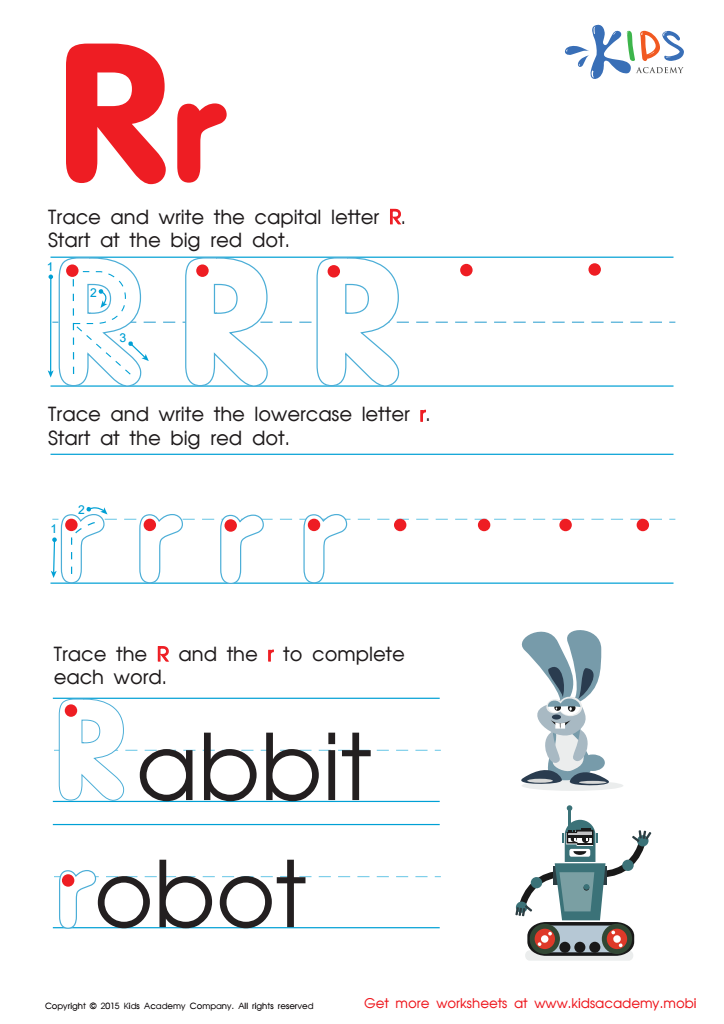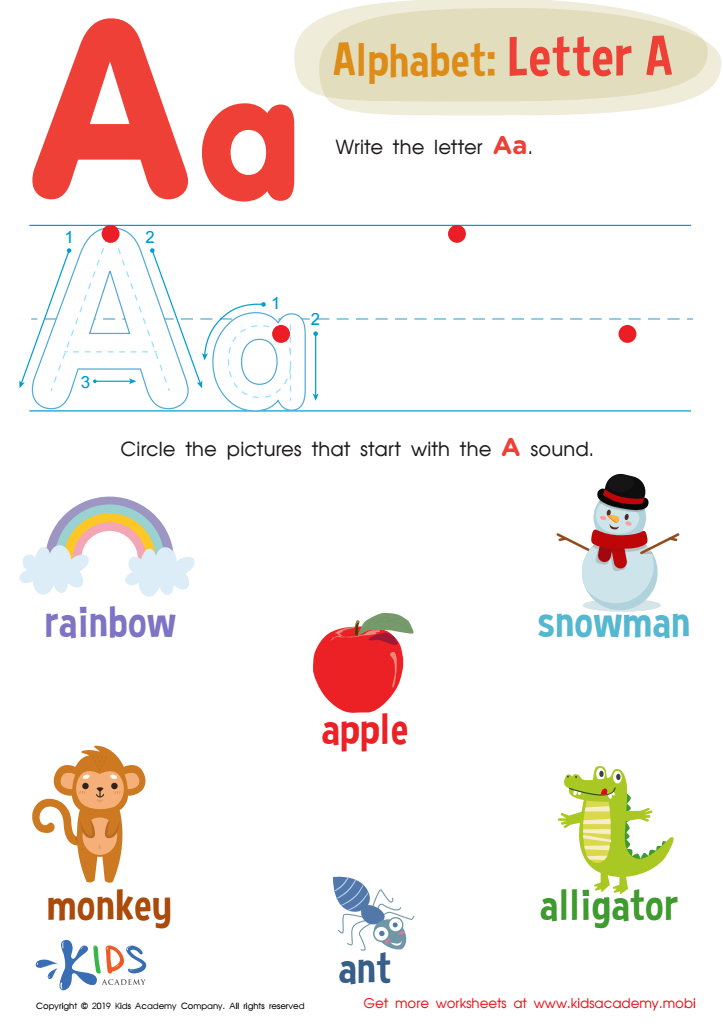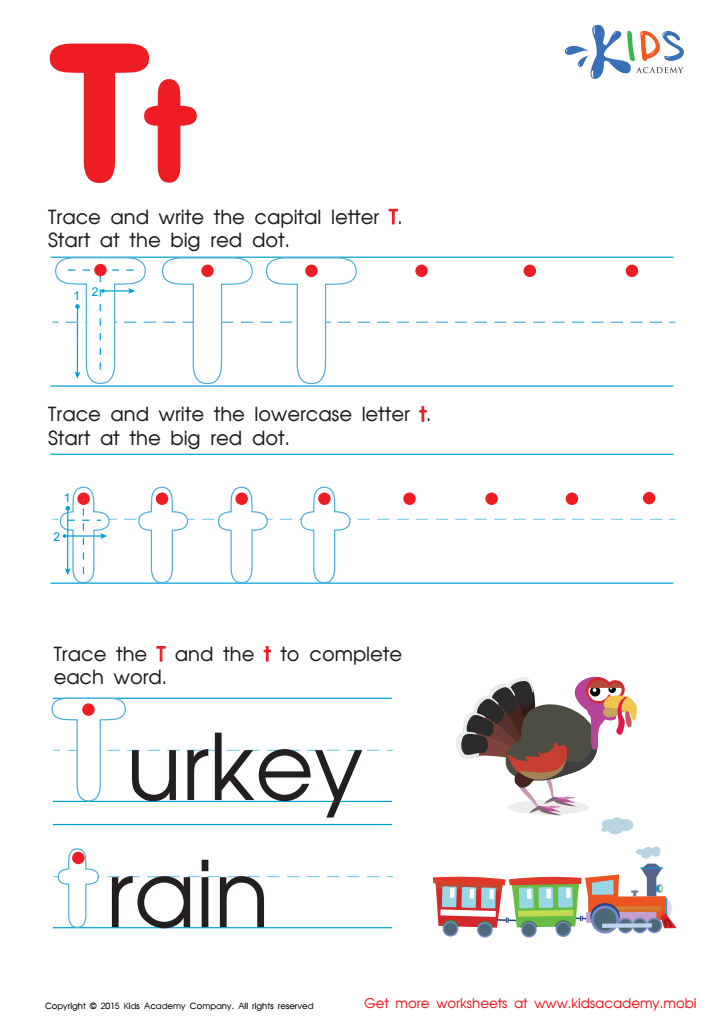Alphabet tracing Tracing Letters Worksheets for Ages 3-6
7 filtered results
-
From - To
Welcome to our engaging collection of Alphabet Tracing Worksheets designed for children aged 3 to 6! Our resources help young learners develop essential writing skills as they trace letters from A to Z. Each worksheet features fun activities that promote letter recognition and fine motor skills, making learning enjoyable and effective. With colorful illustrations and interactive elements, our worksheets cater to various learning styles, ensuring that every child can thrive. Perfect for home or classroom use, our Alphabet Tracing Worksheets lay the foundation for confident writing and literacy development. Begin your child’s journey to writing success today!


Letter R Tracing Page


Letter P Tracing Page


Letter Q Tracing Page


Letter H Tracing Page


Letter A Tracing Worksheet


Letter T Tracing Page


Letter D Tracing Page
Alphabet tracing is a fundamental activity for children aged 3-6, serving as a crucial stepping stone in their early literacy development. Parents and teachers should care about this practice for several reasons.
First, tracing letters helps young learners develop fine motor skills critical for writing. The act of guiding a pencil or crayon along letter shapes strengthens hand muscles, enhancing coordination and dexterity. These skills are foundational not only for writing but also for tasks requiring precision, such as drawing or crafting.
Second, tracing letters reinforces letter recognition, helping children more easily identify letters in their environment. This recognition is essential for early reading skills, as it builds the basis for phonemic awareness, leading to improved literacy outcomes.
Moreover, engaging in alphabet tracing can turn learning into a fun, interactive experience. Using colorful worksheets or digital apps can keep children motivated, making them eager to practice. Furthermore, this activity encourages parents and teachers to create meaningful, participatory learning moments that foster a love for learning.
In summary, alphabet tracing is a vital tool that supports the holistic development of young learners, providing them with basic writing skills and promoting early literacy in an engaging way.
 Assign to My Students
Assign to My Students





















